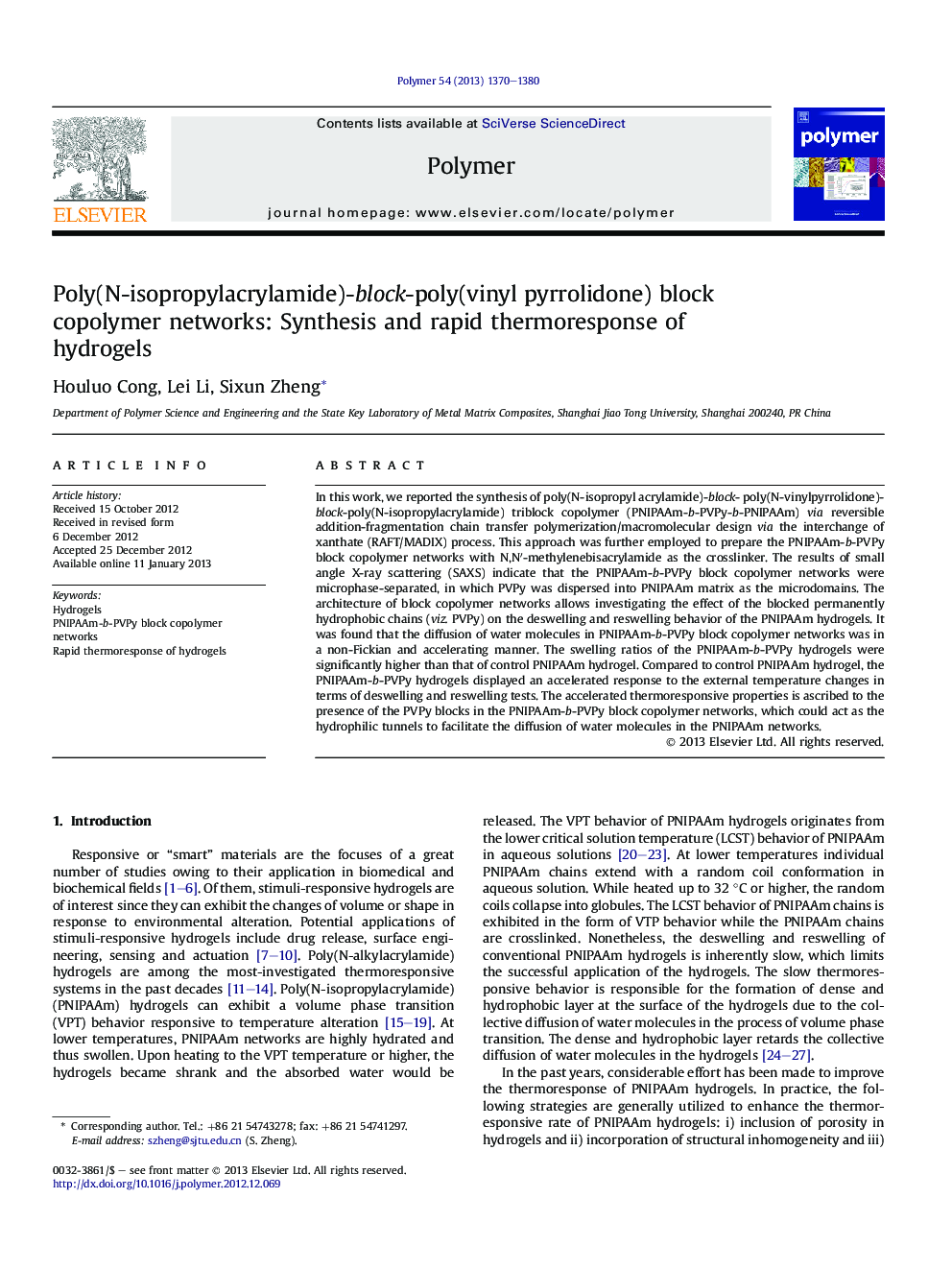| Article ID | Journal | Published Year | Pages | File Type |
|---|---|---|---|---|
| 5182867 | Polymer | 2013 | 11 Pages |
In this work, we reported the synthesis of poly(N-isopropyl acrylamide)-block- poly(N-vinylpyrrolidone)-block-poly(N-isopropylacrylamide) triblock copolymer (PNIPAAm-b-PVPy-b-PNIPAAm) via reversible addition-fragmentation chain transfer polymerization/macromolecular design via the interchange of xanthate (RAFT/MADIX) process. This approach was further employed to prepare the PNIPAAm-b-PVPy block copolymer networks with N,Nâ²-methylenebisacrylamide as the crosslinker. The results of small angle X-ray scattering (SAXS) indicate that the PNIPAAm-b-PVPy block copolymer networks were microphase-separated, in which PVPy was dispersed into PNIPAAm matrix as the microdomains. The architecture of block copolymer networks allows investigating the effect of the blocked permanently hydrophobic chains (viz. PVPy) on the deswelling and reswelling behavior of the PNIPAAm hydrogels. It was found that the diffusion of water molecules in PNIPAAm-b-PVPy block copolymer networks was in a non-Fickian and accelerating manner. The swelling ratios of the PNIPAAm-b-PVPy hydrogels were significantly higher than that of control PNIPAAm hydrogel. Compared to control PNIPAAm hydrogel, the PNIPAAm-b-PVPy hydrogels displayed an accelerated response to the external temperature changes in terms of deswelling and reswelling tests. The accelerated thermoresponsive properties is ascribed to the presence of the PVPy blocks in the PNIPAAm-b-PVPy block copolymer networks, which could act as the hydrophilic tunnels to facilitate the diffusion of water molecules in the PNIPAAm networks.
Graphical abstractDownload full-size image
